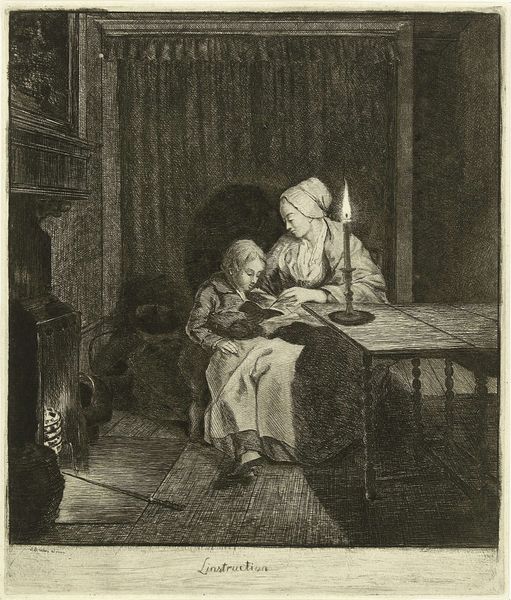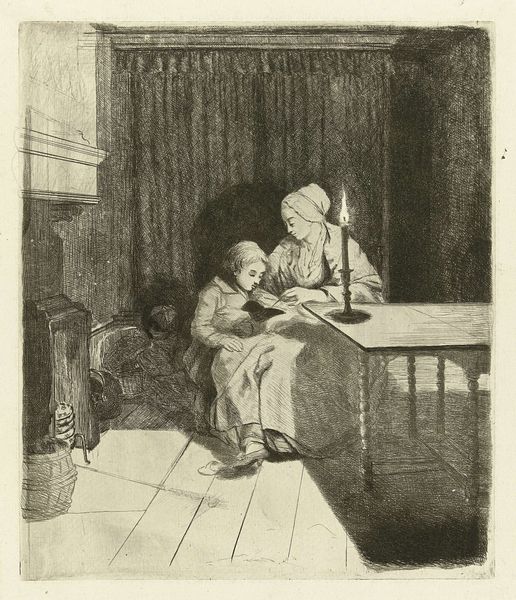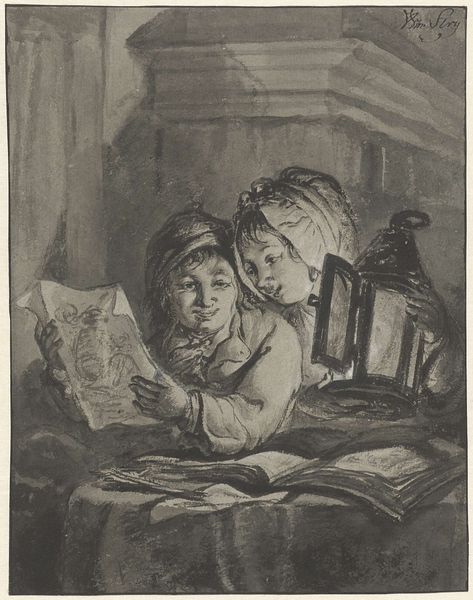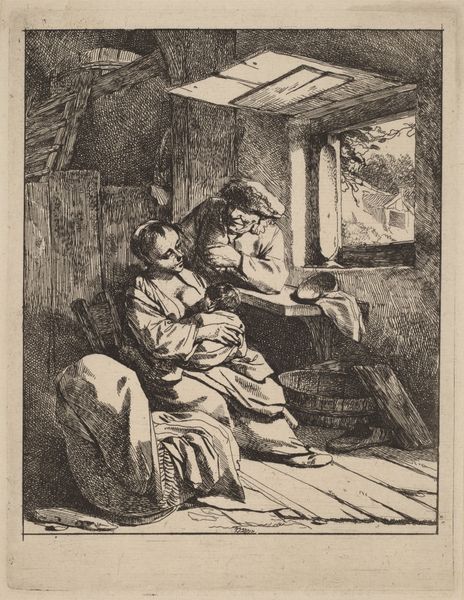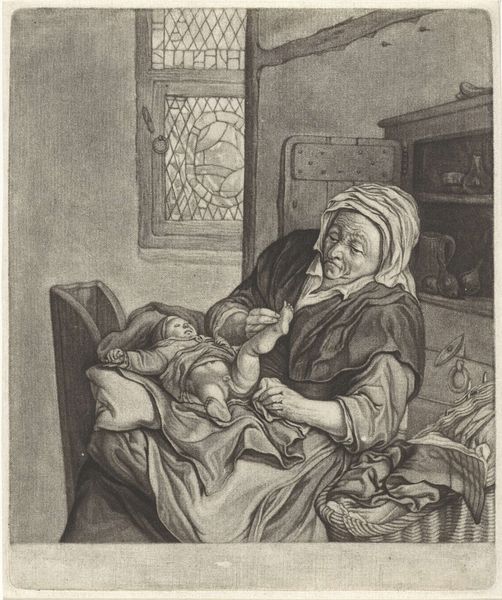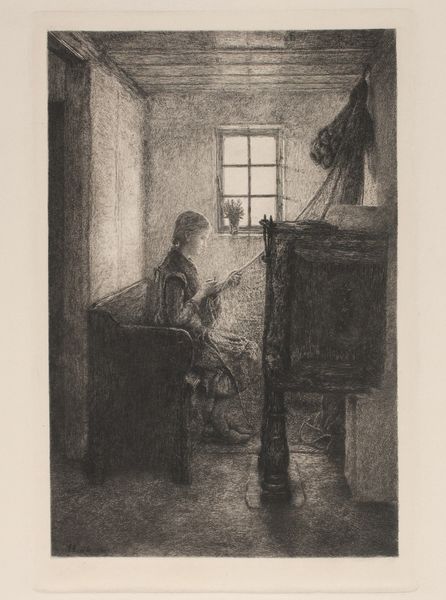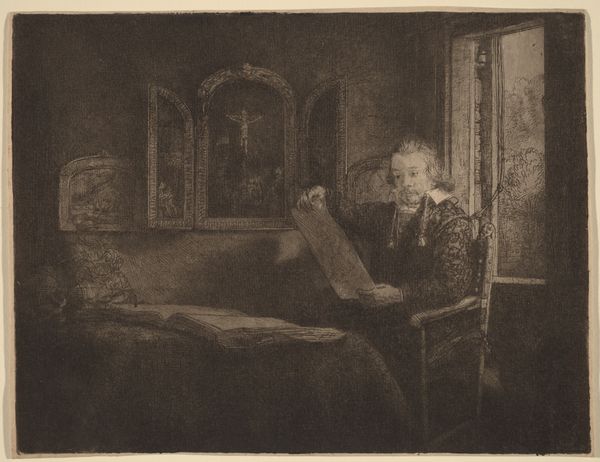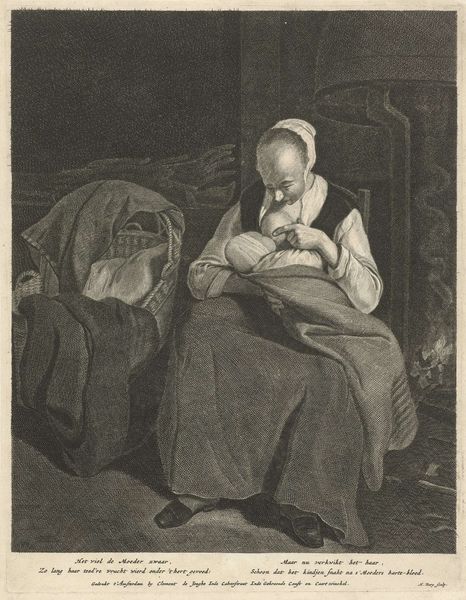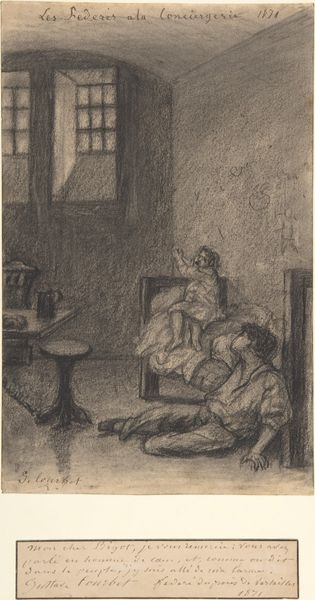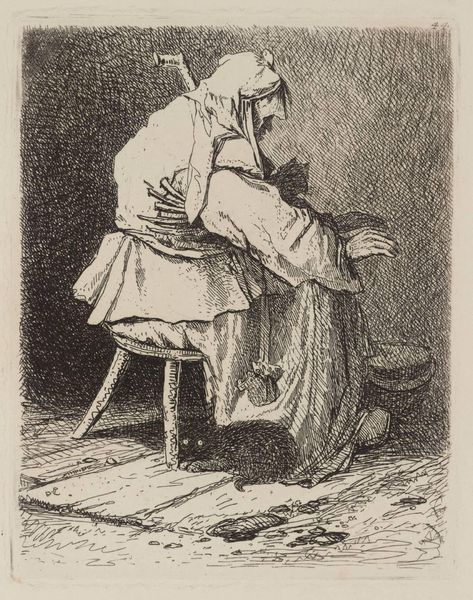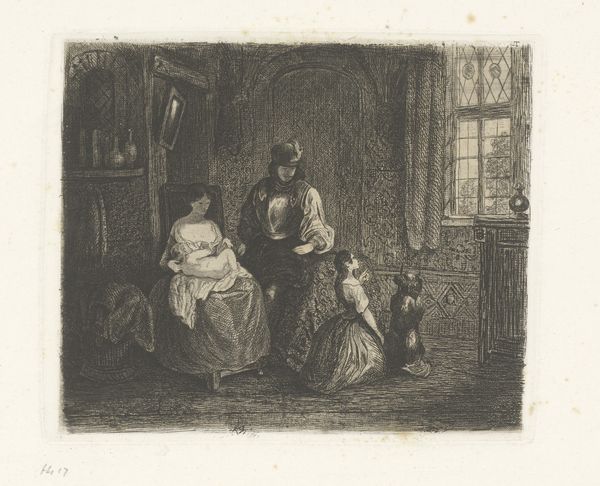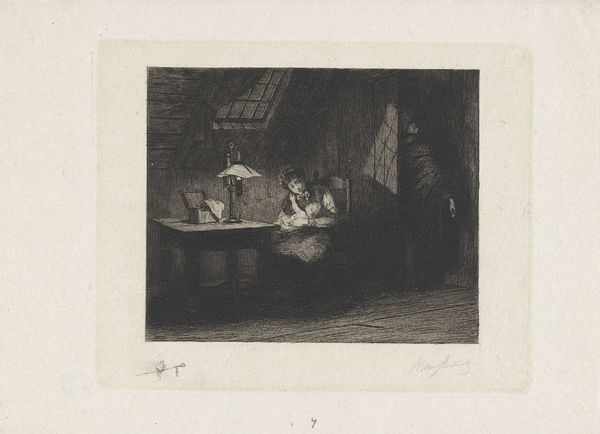
Dimensions: height 270 mm, width 230 mm
Copyright: Rijks Museum: Open Domain
Editor: So, this drawing, "Moeder geeft haar zoon les," or "Mother Teaching her Son," is by Louis Bernard Coclers and dates to between 1756 and 1817. It's rendered in pen and pencil, creating a very intimate and domestic scene, but there’s a solemn, almost heavy feeling to it, emphasized by the darkness. What symbols or deeper meanings do you see at play here? Curator: That heaviness you perceive, I think, speaks volumes. Notice the single candle—a potent symbol. What does a flickering flame signify in art, especially contrasted against the surrounding shadows? Editor: Well, light often represents knowledge, awareness…but here, it's just this small beacon in a very dark room. Is that like, the fragility of knowledge? Curator: Precisely! It speaks to the preciousness and potential vulnerability of learning. Consider the mother's posture—upright, yet protective. What cultural values regarding education and family roles might this suggest for the period? The candlelight becomes the family hearth. What feelings does the candlelight generate? Editor: That mothers were central to early education? I guess the candle’s soft glow makes the scene feel more tender, maybe highlights the bond between them, making learning seem intimate and a little…secret? Curator: Secret, yes! Education was highly sought, carefully monitored, a beacon of enlightenment, or a wick burning out, if knowledge and duty went astray. Are we looking at the start, middle, or near-end of an era? How is that generational symbolism operating here, between mother and son? Editor: That’s really given me a new perspective, especially thinking about the broader social context of the era and what education meant back then. Thanks. Curator: The past whispers its wisdom. Each generation trying to keep the light burning in the dark.
Comments
No comments
Be the first to comment and join the conversation on the ultimate creative platform.
